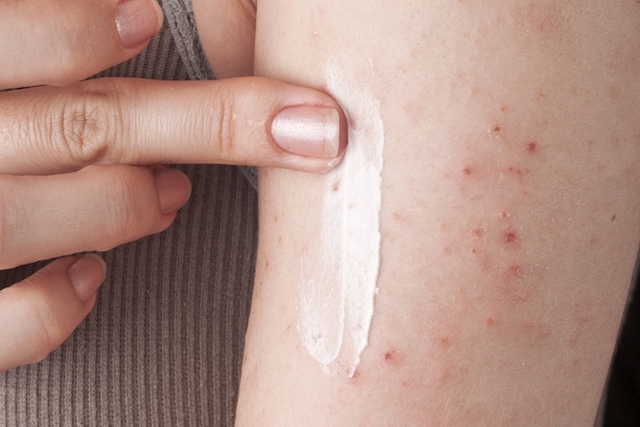Systemic epidermal necrolysis, or NET, is a rare skin disease characterized by the presence of lesions throughout the body that can lead to permanent peeling of the skin. This disease is mainly caused by the use of medications such as Allopurinol and Carbamazepine, but it can also be the result of bacterial or viral infections, for example.
NET is painful and can be fatal in up to 30% of cases, so as soon as the first symptoms appear, it is important to consult a dermatologist so that the diagnosis can be confirmed and treatment started.
The treatment is carried out in the Intensive Care Unit and is done mainly with the suspension of the medication that is causing the disease. In addition, due to the exposure of the skin and mucosa, preventive measures are taken to avoid hospital infections, which can further compromise the patient's clinical condition.

NET symptoms
The most characteristic symptom of toxic epidermal necrolysis is skin damage in more than 30% of the body that can bleed and secrete fluids, favoring dehydration and infections.
The main symptoms are similar to the flu, for example:
- Malaise; High fever; Cough; Muscle and joint pain.
These symptoms, however, disappear after 2-3 days and are followed by:
- Skin rashes, which can bleed and be painful; Areas of necrosis around the lesions; Skin peeling; Emergence of blisters; Alteration in the digestive system due to the presence of lesions in the mucosa; Emergence of ulcers in the mouth, throat and anus, less frequently; swelling of the eyes.
The lesions of toxic epidermal necrolysis occur in practically the entire body, unlike Stevens-Johnson Syndrome, which despite having the same clinical manifestations, diagnosis and treatment, the lesions are more concentrated in the trunk, face and chest. Learn more about Stevens-Johnson Syndrome.
Main causes
Toxic epidermal necrolysis is mainly caused by medications, such as Allopurinol, Sulfonamide, anticonvulsants or antiepileptics, such as Carbamazepine, Phenytoin and Phenobarbital, for example. In addition, people who have autoimmune diseases, such as Systemic Lupus Erythematosus, or have a compromised immune system, such as AIDS, are more likely to have the skin lesions characteristic of necrolysis.
In addition to being caused by drugs, skin lesions can happen due to infections by viruses, fungi, protozoa or bacteria and the presence of tumors. This disease can also be influenced by old age and genetic factors.

How the treatment is done
The treatment of toxic epidermal necrolysis is done in an Intensive Care Unit for burns and consists of the elimination of the medication that is being used by the patient, since usually the NET is the result of adverse reactions to certain medications.
In addition, replacement of fluids and electrolytes lost due to extensive skin lesions is made by injecting serum into the vein. Daily care for injuries is also performed by a nurse to avoid skin or generalized infections, which can be quite serious and further compromise the patient's health.
When the lesions reach the mucosa, feeding can become difficult for the person and, therefore, food is administered intravenously until the mucous membranes are recovered.
To reduce the discomfort caused by the lesions, cold water compresses or neutral creams can also be used to promote skin hydration. In addition, the doctor may also recommend the use of anti-allergy agents, corticosteroids or antibiotics, for example, if the NET is caused by bacteria or if the patient has acquired an infection as a result of the disease and which may worsen the clinical condition.
How the diagnosis is made
The diagnosis is made mainly based on the characteristics of the lesions. There is no laboratory test that can indicate which medicine is responsible for the disease and the stimulus tests are not indicated in this case, as it can cause the disease to worsen. Thus, it is important for the person to inform the doctor if they have any disease or if they use any medication, so that the doctor can confirm the diagnosis of the disease and identify the causative agent.
In addition, to confirm the diagnosis, the doctor usually requests a skin biopsy, as well as a complete blood count, microbiological tests of blood, urine and wound secretion, to check for any infection, and the dosage of some factors responsible for the immune response.















